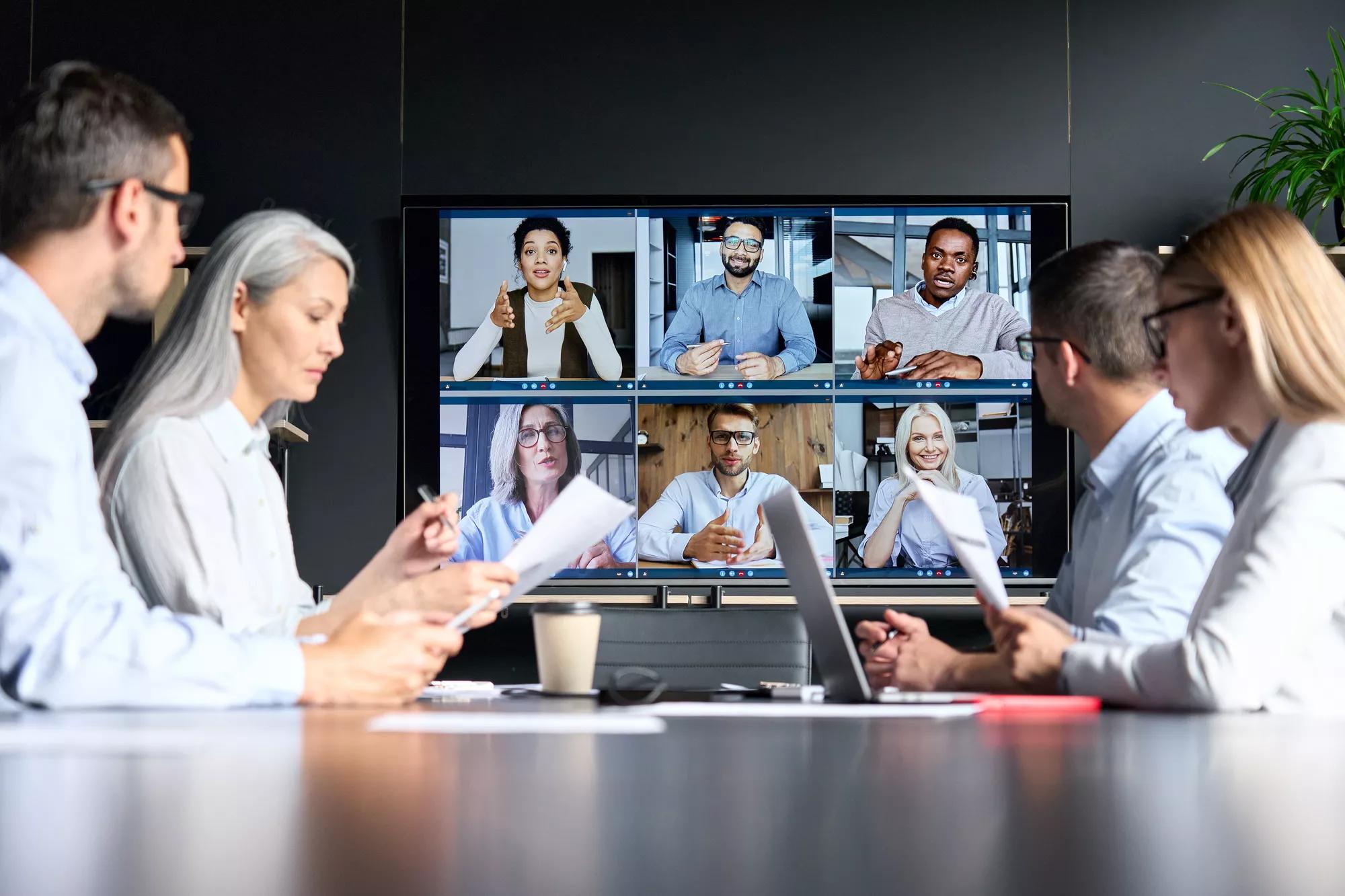ATD Blog
Drive Innovation and Engagement During Your Hybrid Meeting
Both in-person and remote attendees can feel included.
Tue Apr 08 2025

Many—if not most—of us have been part of a hybrid meeting where there seemed to be a disconnect. Either we were attending remotely and could hear the chatter and perhaps laughter of the in-person attendees and felt left out; or we were in the room, likely giving the virtual attendees no thought.
But it doesn’t need to be that way. Hybrid meetings can be cohesive, engaging, and productive, as Sherri Sutton and Robert Kienzle share in “Strategies for Hybrid Meetings.”
Is a Hybrid Meeting Even Necessary?
There’s a reason so many of us have been part of a disjointed meeting: It’s challenging to run what is essentially the equivalent of two meetings at the same time, seamlessly. Because of this, it makes sense first to think about whether a hybrid meeting is the way to go.
What is the level of participation that is needed from attendees? Do attendees need to be engaged and interacting with each other? Or could the meeting be recorded for participants who aren’t on-site? Can the information be relayed online? Can a survey gather feedback from would-be attendees?
Available Resources
Once you’ve determined that you’d like to move forward with a hybrid meeting, you’ll want to organize your budget.
Whether you’ll have the option of proposing a budget or one has already been set, you’ll probably have some discussions with the business stakeholder about the cost. They may not understand the extent of what a hybrid meeting entails. You’ll have technology, venue costs, multiple facilitators, and more to consider. To make it more inclusive, you may want to send remote attendees a coupon for lunch or snacks if food is being provided to in-person attendees.
It may be helpful to come up with different options for the business leader, including ways to save money, for example, by including fewer attendees or making the meeting shorter.
It Takes Two
It is best practice to have two facilitators for a hybrid meeting, an in-person leader to handle on-site discussions, manage the flow of the physical space, and lead activities more broadly. The second facilitator, often called a meeting mechanic, is responsible for monitoring technical problems, overseeing the online environment, and providing instructions for breakout rooms, polls, and the like, for remote attendees. The meeting mechanic also relays questions or feedback to the in-person facilitator.
It's useful to have two separate leader guides, one for each facilitator. For example, how will they call on individuals to share the reports from small group discussions? Will participants raise their hands or use the raise hand button? Or will remote participants use the chat?
Making It Work
“Clearly define desired outcomes before developing engagement strategies for hybrid meetings,” write Sutton and Kienzle. What are the final deliverables, and how will both remote and in-person attendees contribute to the goal?
Some common issues to consider include:
Meeting etiquette: When will remote participants be muted, and when and how will they be able to share their questions, comments, or other input? What are the guidelines for cameras? Are in-person attendees visible to remote participants?
Engagement: How will you ensure participation and interaction? Breakout groups? Small teams? How will you assign participants to each? Are instructions concise so that participants understand what is expected, including how to indicate to facilitators that their work is complete?
Activities: Many in-person activities can be translated to the remote setting. Remote attendees can type into chat their answer to an icebreaker, for example, or the meeting manager can call on individuals. In-person attendees can bring something personal for a show-and-tell, while remote participants can hold something up or type a URL into the chat.
Additional considerations include managing breaks and respecting cultural nuances.
How Did You Do?
To ensure that you are doing the most for in-person and remote attendees, conduct a survey following the meeting.
After ascertaining if an individual attended virtually or in person, ask them if the meeting met their expectations. Did it meet objectives? What suggestions do they have for improvement?
“In today’s hybrid workplace, such meetings are more than just another skill—they’re an opportunity to connect people, spark innovation, and drive results,” conclude Sutton and Kienzle.
More from ATD
